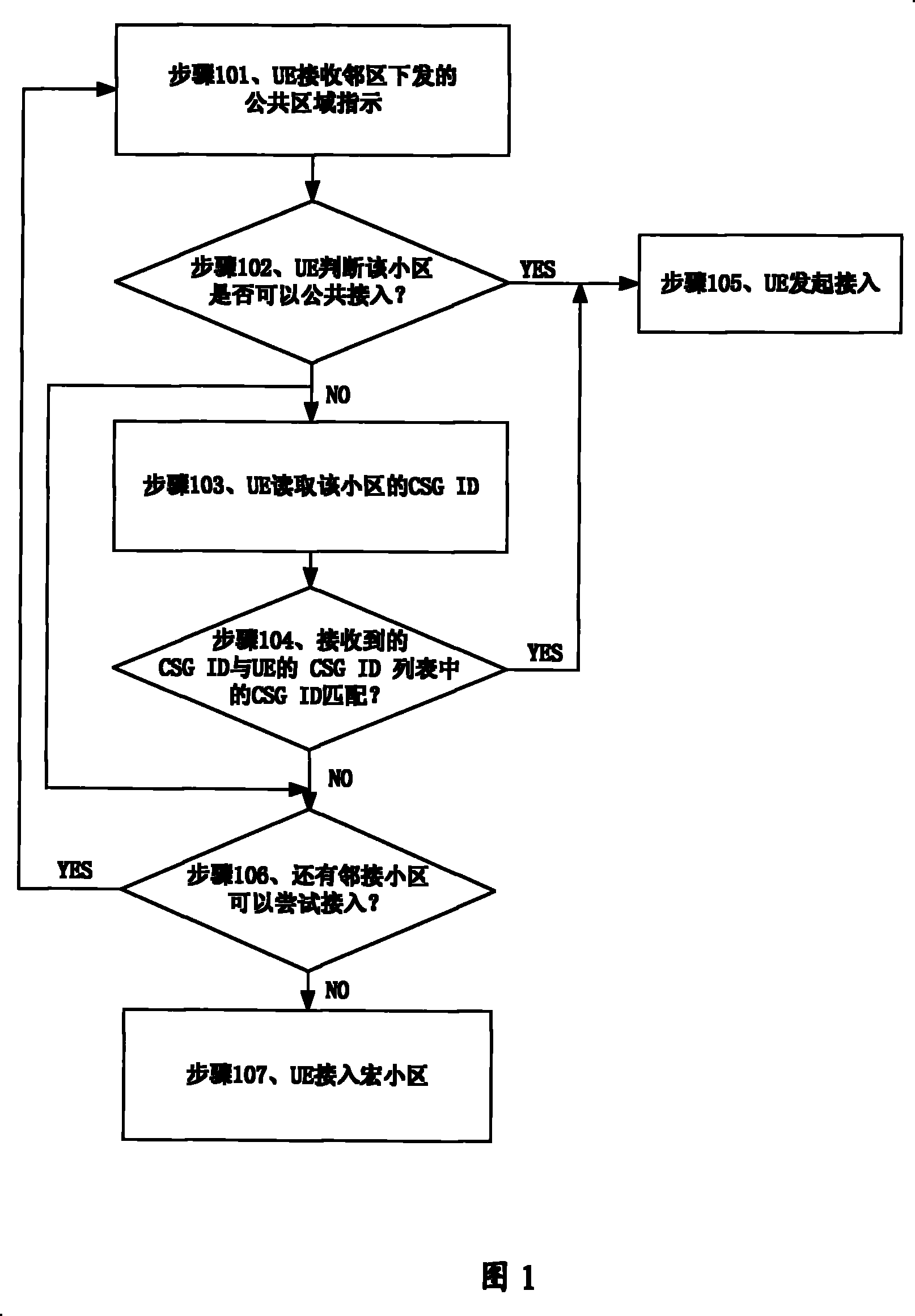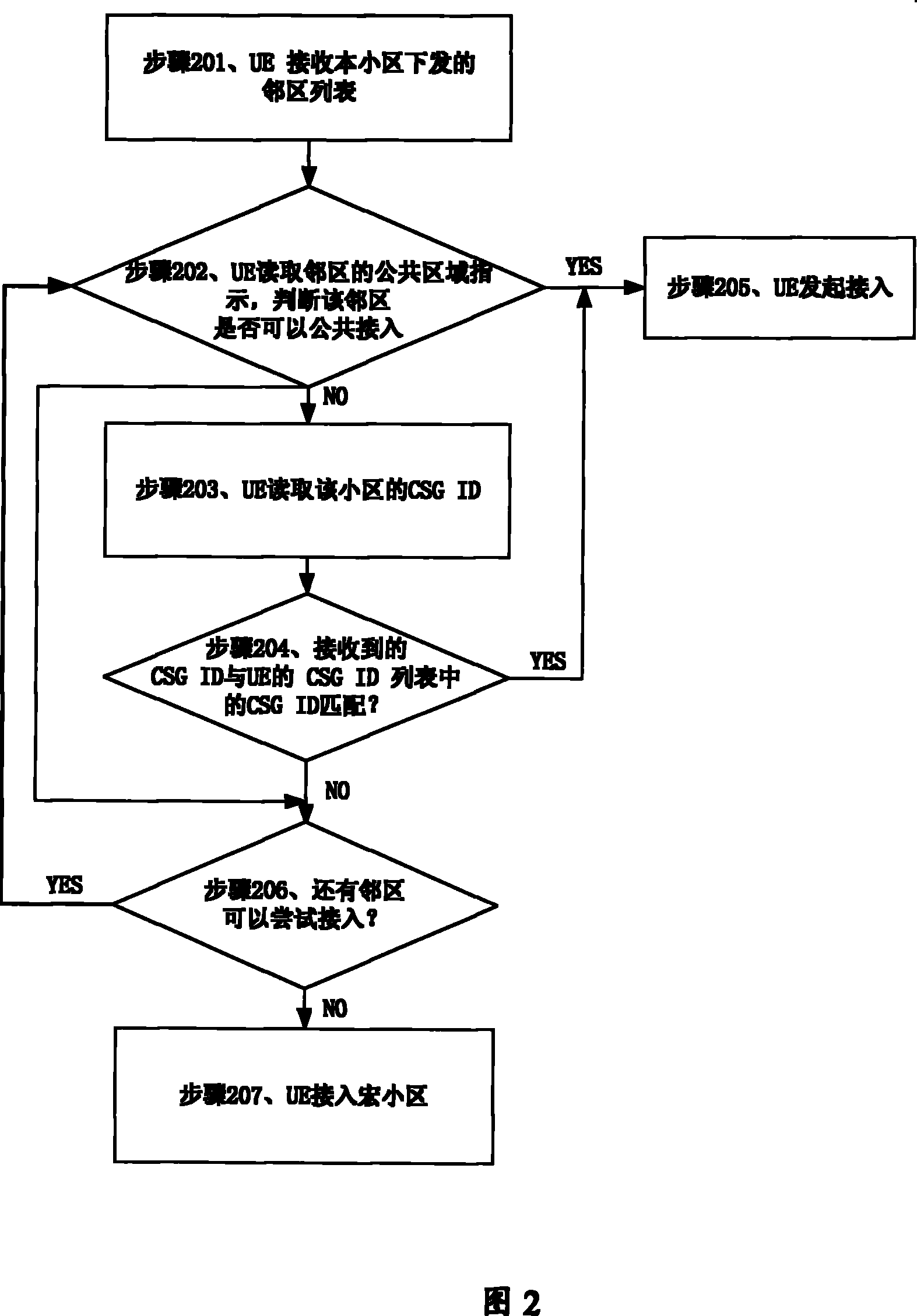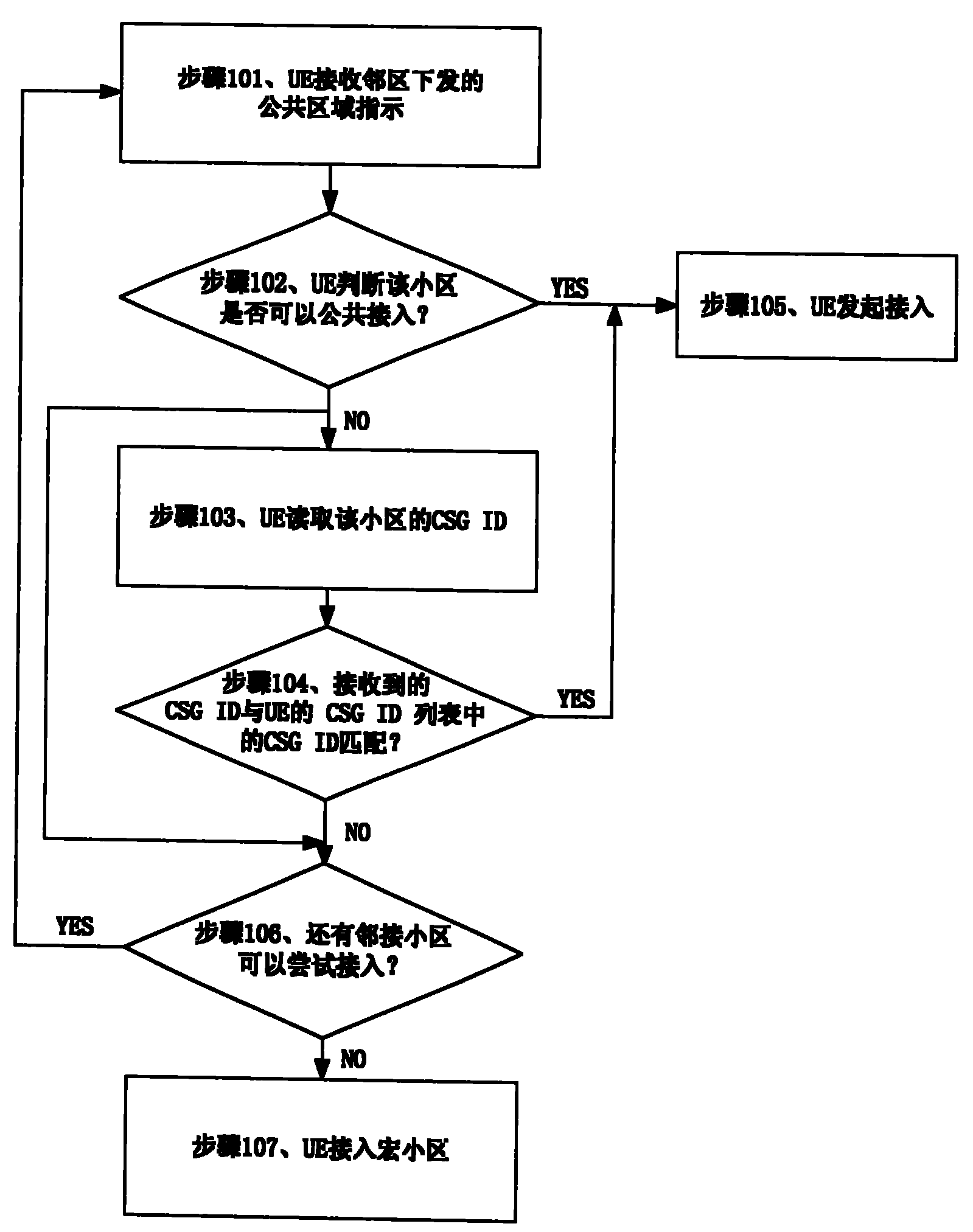Method for accessing wireless network
A wireless network and adjacent cell technology, applied in wireless communication, data exchange network, data exchange through path configuration, etc., can solve problems affecting user service experience and other issues, achieve simplified join and delete control operations, and improve experience and feelings Effect
- Summary
- Abstract
- Description
- Claims
- Application Information
AI Technical Summary
Problems solved by technology
Method used
Image
Examples
Embodiment 1
[0013] As shown in Figure 1, the present invention is a schematic flow diagram of Embodiment 1, and the flow includes:
[0014] Step 101: The UE receives a public area indication issued by a neighboring cell, the public area indication is 1 bit, and is used to indicate whether the neighboring cell is a private network that can be publicly accessed;
[0015] In this step, the public area indication issued by the neighboring cell can be sent on the broadcast channel (Broadcast Channel, BCH) or synchronous channel (Synchronous Channel, SCH) of the neighboring cell, that is, a 1-bit signal is added to the broadcast signal or the synchronous signal. element, used to indicate whether the neighboring cell is a cell that can be accessed publicly.
[0016] The public area indication in this step is not limited to 1 bit, and can be set by those skilled in the art according to system conditions.
[0017] Step 102: The UE judges whether the neighboring cell is a cell that can be accessed...
Embodiment 2
[0025] As shown in Figure 2 is a schematic flow diagram of Embodiment 2 of the present invention, the flow includes:
[0026] Step 201: The UE receives the neighbor cell list including public area indication sent by its own cell, that is, the cell where the UE is located;
[0027] Wherein, the neighbor cell list including the indication of the public area specifically includes: adding a 1-bit attribute value to each neighbor cell information in the neighbor cell list, indicating whether the neighbor cell is a cell that can be publicly accessed.
[0028] The public area indication in this step is not limited to 1 bit, and can be set by those skilled in the art according to system conditions.
[0029] Step 202: The UE reads the public area indication of a neighboring cell in the neighboring cell list, and judges whether the neighboring cell is a cell that can be accessed publicly, and if yes, executes step 205; if not, executes step 203, or executes step 206 .
[0030] Step 20...
PUM
 Login to View More
Login to View More Abstract
Description
Claims
Application Information
 Login to View More
Login to View More - R&D
- Intellectual Property
- Life Sciences
- Materials
- Tech Scout
- Unparalleled Data Quality
- Higher Quality Content
- 60% Fewer Hallucinations
Browse by: Latest US Patents, China's latest patents, Technical Efficacy Thesaurus, Application Domain, Technology Topic, Popular Technical Reports.
© 2025 PatSnap. All rights reserved.Legal|Privacy policy|Modern Slavery Act Transparency Statement|Sitemap|About US| Contact US: help@patsnap.com



